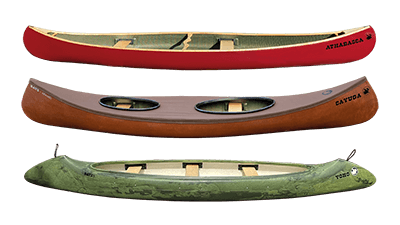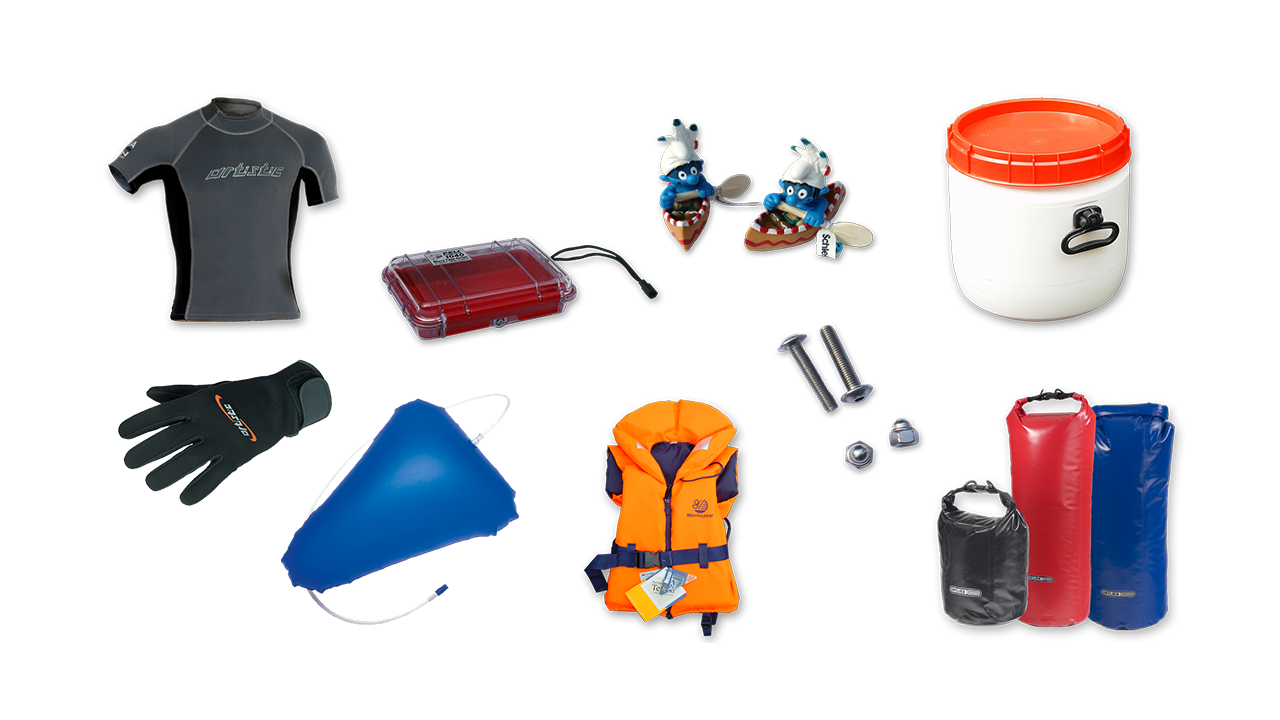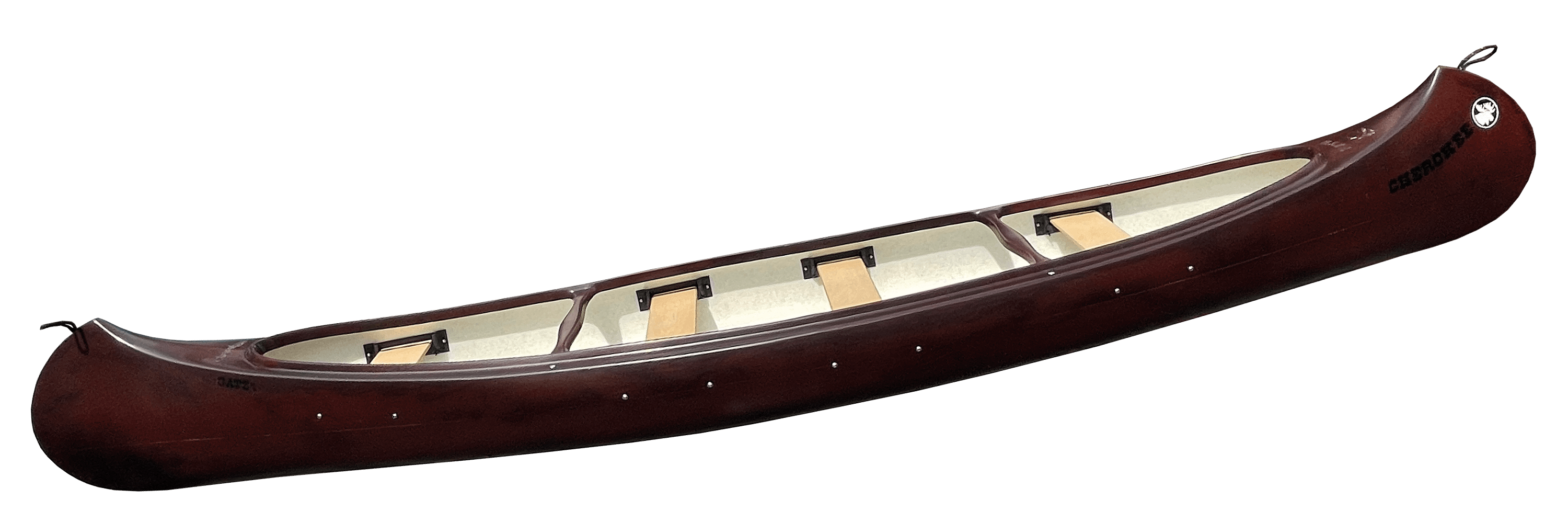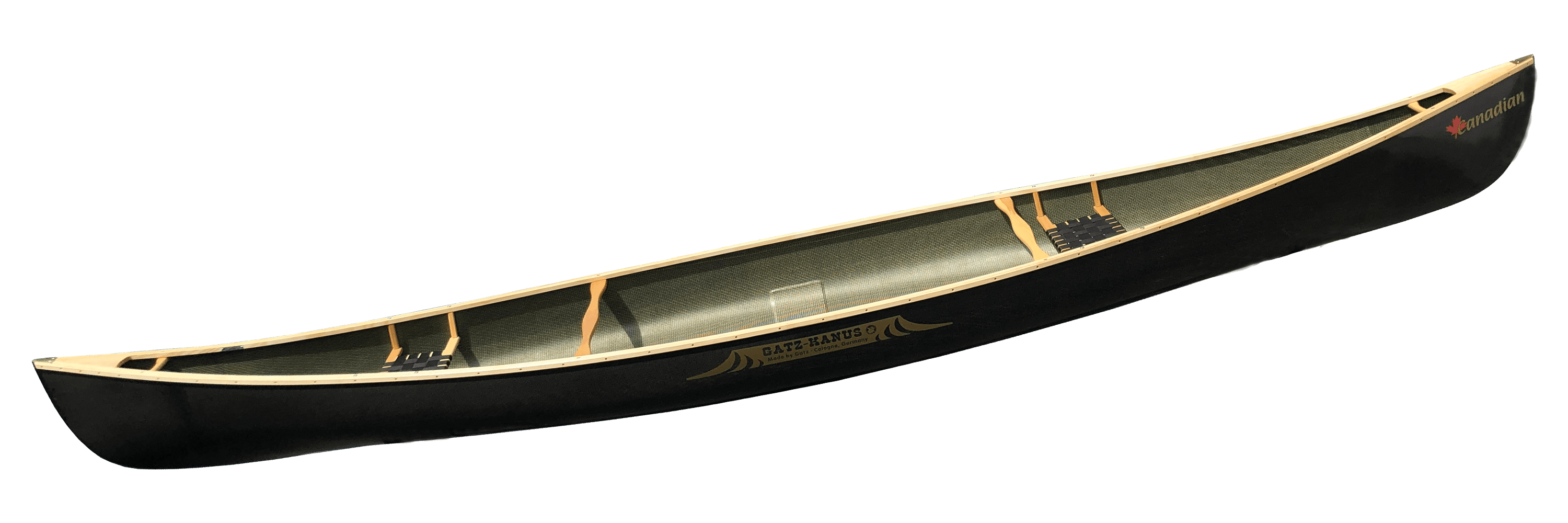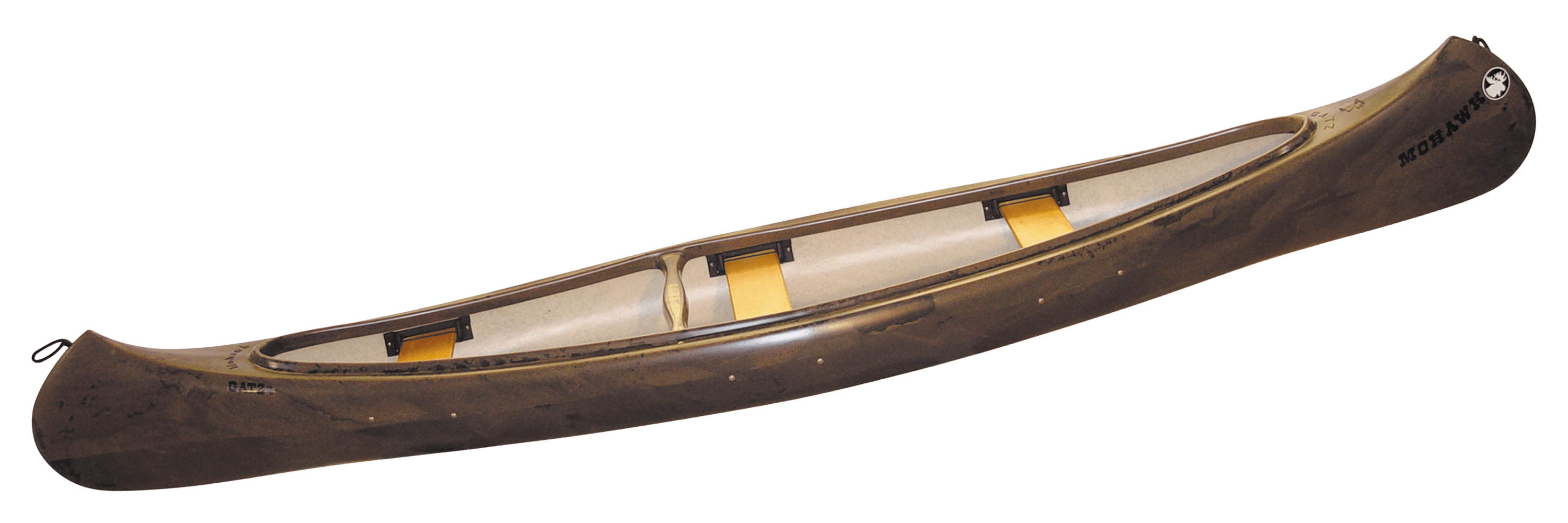
GOOD DESIGN IS EVIDENT IN THE DETAILS
A longer boat is generally faster than a shorter one, all other factors being equal (hence the saying in boat construction, "length is speed"), while a shorter canoe is more maneuverable. The hull shape also plays a crucial role. A canoe with a flat bottom and a pronounced keel is significantly more maneuverable than a canoe with a straight, slightly rounded hull. A rounded bottom provides very high initial stability in almost any position (like standing on one leg), but it may take some getting used to. A flat bottom offers excellent initial stability (safety).
Choose a model that suits your current needs but also allows for flexibility. Larger family canoes like our Cherokee models can easily be paddled by two people. They are designed for this purpose, as depending on the age of the kids, they may provide only minimal assistance in propulsion.
If you are paddling alone or with just one other person and minimal gear, smaller two-person canoes like the Yoho 2, Canoki, which you can easily paddle solo. In this case, it's recommended to paddle the symmetrical canoe from the front seat with a view towards the stern. This positions the boat better, preventing the bow from rising out of the water and reducing wind resistance. You'll be closer to the pivot point, which makes maneuvering easier. For dual use as a solo and tandem canoe, the covers with the large front hatch are ideal.
Why and when should you paddle solo? When your partner or family doesn't have time for canoeing, but the small river has the perfect water level, and the family canoe is too large and unwieldy for a solo trip, that's when solo-capable canoes come into play. A solid basic stroke and a functional steering stroke (examples in the paddling techniques section on this website) will take you and your boat anywhere you want to go.
Cross-sections and longitudinal sections can be found as pictograms for each boat model in the compact information.
CROSS-SECTION

The flat bottom (U-shaped hull)
The flat bottom (U-shaped hull) provides maximum initial stability. You can stand up in the boat, and it feels very secure with multiple people on board. However, the final stability of this shape is slightly lower, and it would take a lot for such a boat to capsize. An example from this group is the Cherokee 500.

The moderate round hull
The moderate round hull provides excellent final stability, meaning you can easily right the canoe from nearly any tilted position by shifting your weight. The slight rocking around the center of gravity means that this hull shape never sits as stably in the water as the U-shaped hull. The round hull enhances all-around performance in highly dynamic water. An example canoe from this category is the Ohio.

The V-bottom
The V-bottom combines characteristics of both the round-bottom and flat-bottom designs. The boat can pendulum around its center of gravity when at rest, but it quickly levels out and remains relatively stable. The V-bottom offers better tracking similar to the round-bottom designs but can come into contact with underwater obstacles more quickly in shallow waters, much like a boat with a keel. Therefore, it is recommended for use on lakes and deeper waters. Examples of canoes with a V-bottom are the models in the Gatz-Canadian series.

The flat round bottom
The flat round bottom is the most commonly used shape in Gatz canoes and is a characteristic of well-constructed canoes. Canoes with this cross-section offer a balanced mix of safety, comfort, and performance. Examples of this category include Mohawk 470 and Mohawk 490 PE.
LONGITUDINAL SECTION

Straight waterline
Canoes with a completely straight waterline, meaning no keel line, are designed for fast straight-line performance. The entire length is in contact with the water, allowing even a short canoe to track straighter than a longer one with more keel line. Canoki and Yaqui are good examples of this design.

Deep keel line
Canoes with a strong keel line, which means a significant rise at the ends of the boat, are designed for narrow small rivers, whitewater use, or simply for playful paddling without a primary focus on speed. On normal flowing rivers and lakes, you'll need a bit more steering technique because these boats are exceptionally maneuverable. The Yoho 1-80 and the Prospector 488, without reaching their maximum load capacity, are popular examples of this category.

Moderate keel line
Canoes for all-around use have a moderate keel line. They provide a good balance between tracking and maneuverability, in combination with the hull cross-section. You can find these characteristics, for instance, in the Mohawk 470 and the Ohio models.
Bow design
Gatz canoes, with their distinctive bow designs, are considered the origin of the current popularity of canoeing in Germany. Boats with pronounced bows, in various forms, were constructed by many Native American tribes. Even the Voyageurs, who explored North America by canoe, used high bow forms in their large canoes, which were equally suitable for the stormy large lakes and the moving waters of the major rivers. Different bow designs result in different lengths of waterline, and often, as with sea kayaks, the waterline becomes longer in rough water.
Even above the waterline, the dryness of a canoe's performance is influenced by the bow design. Some designs are limited by the materials used and the manufacturing process, and there are also constructions on the market that are purely focused on function, such as stackable designs for long transport routes.
Bow and Wind: Wind is a disturbance for all water sports enthusiasts except for sailors. However, there are many techniques to paddle into wind-protected shore areas, even in sudden strong winds. The high, traditional bow, often incorrectly attributed to wind susceptibility, is not relevant to the function and handling of your canoe. Otherwise, indigenous people or Voyageurs would have certainly used different forms over the centuries. Bow surfaces, whether higher and rounder (e.g., Mohawk 470) or straighter and flatter (e.g., Canadian 475), are nearly the same in terms of surface area. When it's really stormy, larger paddlers with bulkier clothing are more wind-sensitive than smaller paddlers with snug jackets. This is not typically considered a significant criterion. What's crucial is the total wind-attack area, including the boat's sides above the water, in relation to the submerged hull area. A spray deck primarily reduces wind exposure, especially for empty canoes. Properly balancing luggage and paddlers also helps. We recommend, based on decades of experience in various canoes on waters around the world in good and adverse conditions and the collective wisdom of our customers, that you make a decision based on your personal aesthetic preference.
At Gatz Canoes, you'll find an appealing bow shape for every taste and purpose. Gatz Canoes are beautiful, individual, and functional.



